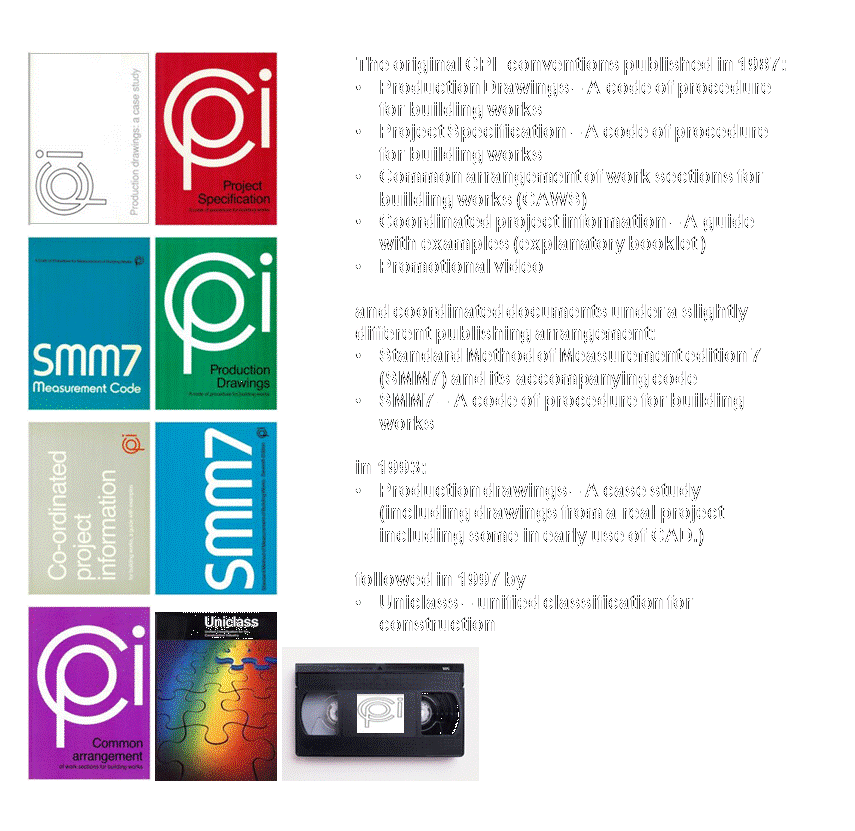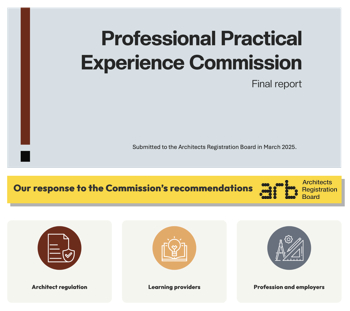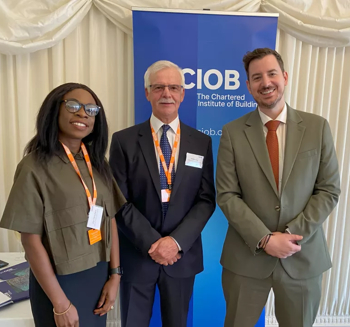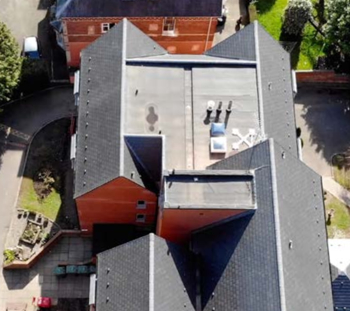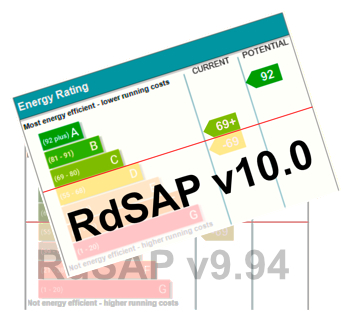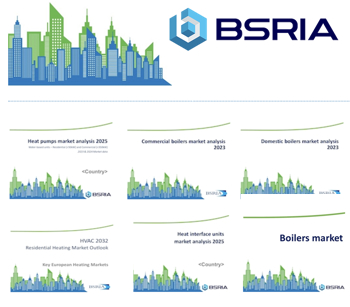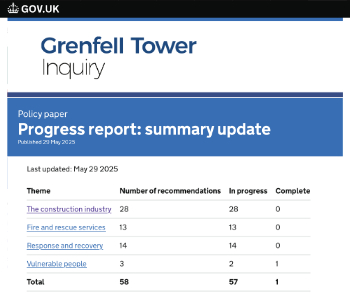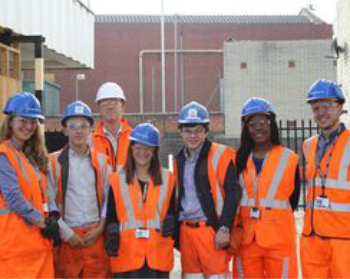BIM - it's about the Planet - Part 1
Author: Keith Snook (with funding from BRE Trust)
This is part 1 of a 5 part paper. Click below to read the other parts:
- BIM - it’s about the Planet - Part 2.
- BIM - it’s about the Planet - Part 3.
- BIM - it’s about the Planet - Part 4.
- BIM - it’s about the Planet - Part 5.
This paper is based on historical activity and signposts current activity in the UK but does, where appropriate make reference to developments and parallells elsewhere. It starts with and acknowleges the realisation that we must do something about the depletion of our planet’s resources and finishes with a suggestion that by joining the appropriate data together we stand a better chance of doing that.
In terms of the construction industry it moves from a quote from a leading architect made around 90 years ago through to a world where we are enveloped in data and undergoing an attitude change that proposes that as much data as possible should be freely avaialbe to enrich lives socially and in enterpise collaboratively. The role of the built environment and particularly the construction industry that produces it is the main focus of the paper, tracing that industry’s relative failings in communications, teamwork and adoption of technology.
BIM is the current push and there are high expectations for its capacity to enable the changes necessary and the UK is taking this very seriously, so much so in fact that the eyes of the world are now turned towards it and by considered measures it is now generally considered to be leading with it being highly likely that Standards and guidance prepared for the UK market will become internationalised. It will be up to the industry to capitlaise on this situation.
Contents |
[edit] Introduction – setting the scene
The majority of papers on BIM - Building Information Modelling - tend to jump straight-in from a contemporary construction industry focus and concentrate on the technology angle. We risk however losing the wider context, including forgetting for example that the construction industry exists primarily to provide a built environment to facilitate other activities. In its potential for contributing to whole life data, BIM can help remind us of this. The construction industry in the UK has been the subject of many major reports in the last 100 years and we can also forget that these for the most part have each been a reaction to dissatisfaction of either specific aspects or generally a perceived poor performance. In order to put the application of the technology involved in BIM into a context this paper reviews ways in which the industry operates to deliver its products, picking up on themes from some of the many reviews, and links this to both the development of the environmental agenda and the emergence of the era of ubiquitous data [1].
[edit] The environment
There is no definitive date for the start of mass awareness of the environmental agenda; for some it is the early 1960s with pioneering publications, such as ‘Silent Spring’ by Rachel Carson in 1962 and early research findings starting to demonstrate trends, for others with the creation of early ‘action funds’ such as the Environmental Defence Fund in 1967 where a steep decline in the numbers of Osprey (Sea Eagle) caused alarm. For the mass photo-news and television oriented world a photograph taken on 24 December 1968 by Bill Anders an astronaut on the Apollo 8 space mission, might well serve the purpose.
Fig 1 “Earthrise” (Image available freely from NASA)
With the barren lunar landscape in its foreground it symbolised the frailty of blue planet Earth and stimulated debate, action and awareness making it politically impossible for governments to continue to side-step the concerns previously expressed by engaged scientists and minority pressure groups. The path to where we are now has not been straight forward and agreement, particularly on action, seems to be harder to achieve notwithstanding increasing scientific consensus on imminent, predictable and irreversible effects of our influence. Of course even without the space mission(s) and the photograph we may well have arrived at the same place in our collective thinking but it provides a useful and emotive icon for the “start” particularly for those of us who remember its first publication.
So what has the environmental movement to do with BIM? Concepts initially restricted to environmental conservation have long since been supplanted by more holistic understanding of sustainable development [2] with the term “environment” being expanded to cover all that surrounds us. More often than not the term “sustainability” is left to stand on its own as the descriptor of an ambition or target. To be more than just subjective ideals, aspects of this or any other definition have to be measurable and to do that requires data. For example a popular expression is to aspire to ‘zero carbon’. The science on how to measure let alone achieve this is complex, opaque and imprecise but at least it is a concept involving a quasi-numerical value to aim at.
In the UK, the government hypothesis about BIM is direct on this. It refers specifically to carbon performance, is inclusive of economic value and is simply stated:
“Government as a client can derive significant improvements in cost, value and carbon performance through the use of open sharable asset information” [3]
BIM is seen as a way of facilitating this as asset information is derived from data and some of that data will increasingly come from BIM, more will come from related data sets such as AIM (Asset Information Models) and others so far not ascribed an acronym but which will go on to be a part of ‘Big Data’ [4].
[edit] What is data?
As we shall see in the context of BIM and the implementation of the current UK government construction policies leading the way for the rest of the market, particular data can be quite specifically described and identified and indeed this is what most of the activity and effort has been about; but more generally what is it and how does BIM data fit into the wider ‘open data’ initiatives?
Data is a plural of datum which means fact. It is generally represented by digits and symbols and theoretically if kept to this simplicity it is universally interpretable. The term is also used to represent values in a qualified form such that increasing the level of qualification decreases the universality of interpretation. So in this common use of the term it enters a grey zone between its purest form and information; this grey zone becomes an important issue in compatibility of systems that operate with the data. Information is knowledge that makes sense and produces meaningful results from data.
[edit] Ubiquitous data
That UK government statement does not say ‘BIM’ directly and that is where the notion of ubiquitous data enters the argument: Data is now everywhere and we do not know (yet) how best to use most of it creatively. Ubiquitous data includes social, mobile, big data, analytics, cloud, software as a service, process, and more recently, the Internet of Things. In forty years we’ve moved from an analogue society of paper and fixed telephone to a place where we are rapidly representing, our entire world as a digital landscape. Indeed the Earthrise photograph, or at least how it got to be taken, can be emblematic of this aspect too. The equivalent to the rooms of computing power at the time of that mission can now be installed in one device along with equivalent in digital storage of the paper drawings and specifications that would have been produced to create the Saturn launch vehicle used in the mission. Even more contemporarily it could be held in ‘the cloud’ and rapidly accessed on a smart-phone.
Fig 2 Digital infrastructures – illustration of Facebook activity in 2010 (published as creative commons by Mark Zuckerberg; founder and CEO of Facebook)
Digital infrastructures have to support our ideas and interactions and be expansive so that through them we can make sense of everything physical, such as location, direction, acceleration, presence, contact, pressure, proximity, texture, temperature, gestures, odour, sound and nothing (absence of anything presently measurable). Sensors, applications, logs, and human interactions feed the process which in turn enables automation and human decision making. Analysis cycle times reduce and are more precise and so better inform decisions, help eliminate waste and error and enable enhanced interaction in a measured physical world. This is all with us now in popular applications that we have already begun to take for granted such as (often free) route planning and recording apps for our Smart Phones that relate personal data (age, weight, heart rate etc) to GPS data for example and produce information such a power output, calories burned and much more. Similar may not be overtly happening in construction but the fuel for this technology is data and BIM is data. Data about our built environment and whilst its present use, primarily in the service of construction design and process might hardly dent the above aspirations or comparisons, its adoption into full life cycles will make it become ever more significant and part of the ‘Big Data’ jigsaw puzzle.
[edit] Open Data
The word ‘open’ indicates a significant move encouraging openness for the greater good in contrast to existing norms that emphasise ownership and advantage. Clearly commercial advantage and intellectual right continues to be important and respected but the movement is about freeing up all that does not genuinely need such protection. In the UK the Cabinet Office published the Open Data Strategy in June 2012 and hot on its heels the Open Data Institute (ODI) was founded in by Sir Tim Berners-Lee and Professor Nigel Shadbolt with £10m start-up funding (2012 – 2017) from the Technology Strategy Board. It is an independent, non-profit, non-partisan, company limited by guarantee with the aim of catalysing the evolution of open data culture to create economic, environmental, and social value. It helps unlock supply, generates demand, creates and disseminates knowledge to address local and global issues through collaboration, incubation, nurturing and mentoring new ideas, and promoting innovation.
Internationally the G8 Nations Open Data Strategy and Charter [5] (2013) sets out a set of principles that will be the foundation for access to, and the release and re-use of, data made available by G8 governments. They are:
- Open Data by Default
- Quality and Quantity
- Useable by All
- Releasing Data for Improved Governance
- Releasing Data for Innovation
[edit] IT in construction
It is often said that the construction industry is behind other industries in its use of IT and at face value this is probably true though such statements are often supported by uncomfortable comparisons and lack of understanding of some of the issues. The complexity and transient nature of the relationships involved in the construction of the built environment is generally held as a reason (or excuse depending on viewpoint) for this backwardness. The industry has remained disjointed in its business structures and adversarial [6] in the legal frameworks that relate the parts to the whole. In this context it is unsurprising that the various fragmented parts of the total process have apparently been reluctant to invest [7] in IT solutions that themselves have been for the most part aimed at providing particular business-discrete or process-discrete applications.
For example even with BIM and its implication of collaboration the term “lonely BIM”, used to describe one discipline working in isolation with the technology, is not generally used as one might think in a pejorative way but used more to suggest that the protagonist is heroically doing the best they can under the circumstances. However logical there has been very little imperative or obvious reward for anyone to beneficially own the unification of the discrete parts. Where it is addressed the business model is typically to cover the costs from deflecting the process risks and the methodology has been invariably through exercising quite punitive contractual relationships rather than creative management processes. Similarly and confronted with such a marketplace there have been few incentives for the IT industry to present solutions or for any individual parts of the construction industry to commission holistic solutions. Any efforts, and there have been some, have largely been left to small bands of enthusiasts, sometimes ‘borrowing’ time from understanding and sympathetic employers and a few academics. The passion behind essentially pro-bono efforts and the preciousness of academia can sometimes prove as divisive as the commercial pressures that their efforts set out to question.
Many official reports on the industry identified the structural weaknesses as contributory to habitual ingrained and almost anticipated poor performance. Evidence for this occurred in the application of first construction industry Key Performances Indicators (KPIs) in the early 2000s. There was some pressure to have certain performance measures, particularly related to design issues, which could score more than 10/10 in order to highlight those cases where, for example, good design has genuinely created something that significantly exceeds demands and expectations. The mathematical logic of this approach was not unreasonably questioned but reluctantly there was agreement to include instead some additional questions in the data collection of the kind “did the performance exceed expectations”. This missed the point being pursued but was enlightening in another way. What subsequently happened was that this box was quite frequently selected but accompanying very ‘middling’ numerical scores indicating that expectations of the industry are institutionally low.
What should be a turning point, albeit that there are still threats from ingrained cultures and custom is the confluence of:
- IT in the form of BIM (and systems that surround it),
- IT in the rapid growth and use of digital media particularly in a social setting which is informing more formal processes and facilitating blisteringly rapid change,
- Emerging patronage for new processes in construction that challenge the status quo.
These now occupy the same space and the timetabled ramped approach to the technology aspects (see Fig 4) also helps provide a platform to address the industry cultural and custom issues by the provision of authoritative guidance.
[edit] UK construction industry operation
The Coordinated Project Information codes were issued in 1987 and included a promotional video the opening scene of which is an animation of soldiers at the battle-front in the Crimea (~1850s). They are sending a vitally important message via several messengers to battalion HQ: “Send reinforcements – we are going to advance”. Through various stages of distortion and mishearing that message arrives at HQ as “Send three and four pence – we are going to a dance”.
Fig 3 the early CPI (large logo) and coordinated documents (small logo)
This simple, humorous, often quoted and no doubt apocryphal scene captures one of the most significant issues that construction has failed to convincingly address. As an industry it has risen to all kinds of technical challenges, produced the most spectacular feats of engineering and breathtaking architecture and design; but it has failed to get its communications working effectively. There have been many efforts to both identify the difficulties and address them with perfectly reasonable, logical and sometimes pragmatic guidance.
Click here to continue reading: BIM - it’s about the Planet - Part 2.
[edit] Related articles on Designing Buildings Wiki
- BIM - it’s about the Planet - Part 2.
- BIM - it’s about the Planet - Part 3.
- BIM - it’s about the Planet - Part 4.
- BIM - it’s about the Planet - Part 5.
- BIM for Energy Efficiency (EP107).
- Cloud computing.
- Enterprise resource planning ERP.
[edit] External references
- [1] "From the dawn of civilization to 2003, five exabytes (1018) of data were created. The same amount was created in the last two days." Google CEO Eric Schmidt speaking in the keynote presentation at the Guardian's Activate summit 2010, which addressed "society, humanity, technology and the Web"
- [2] Brundtland is probably the most widely accepted formal definition. The first part of this is: "Sustainable development is development that meets the needs of the present without compromising the ability of future generations to meet their own needs.”
- [3] Main hypothesis of A Report for the Government Construction Client Group – BIM working strategy Client Group 2011
- [4] Big Data is generally reckoned to be collections of data beyond current data handling capability and as such is constantly advancing. Gartner(US IT research and advisory organisation) defines it as: “Big data is high volume, high velocity, and/or high variety information assets that require new forms of processing to enable enhanced decision making, insight discovery and process optimization”
- [5]https://www.gov.uk/government/uploads/system/uploads/attachment_data/file/207772/Open_Data_Charter.pdf
- [6] This term is the widely used to mean ‘confrontational and antagonistic’ implying something negative; and is used in this manner in this paper. However, technically the UK legal system is classified as ‘adversarial’ (in contrast to the inquisitorial system such as Napoleonic Law in much of Europe) so in the pure contextual definition of the word it does not confer anything negative.
- [7] A survey of 60,000 UK IT budget holders undertaken by the Journal ‘Computer Weekly’ stated: “Large construction firms spend an average of £10,285 per desktop each year on IT - more than 20% above the UK-wide business average of £8,455. This differential is even more marked in small and medium sized construction firms, where the average spend is £5,307 per desktop against an SME industry average of £3,132.”
Featured articles and news
Key points for construction at a glance with industry reactions.
Functionality, visibility and sustainability
The simpler approach to specification.
Architects, architecture, buildings, and inspiration in film
The close ties between makers and the movies, with our long list of suggested viewing.
SELECT three-point plan for action issued to MSPs
Call for Scottish regulation, green skills and recognition of electrotechnical industry as part of a manifesto for Scottish Parliamentary elections.
UCEM becomes the University of the Built Environment
Major milestone in its 106-year history, follows recent merger with London School of Architecture (LSE).
Professional practical experience for Architects in training
The long process to transform the nature of education and professional practical experience in the Architecture profession following recent reports.
A people-first approach to retrofit
Moving away from the destructive paradigm of fabric-first.
International Electrician Day, 10 June 2025
Celebrating the role of electrical engineers from André-Marie Amperè, today and for the future.
New guide for clients launched at Houses of Parliament
'There has never been a more important time for clients to step up and ...ask the right questions'
The impact of recycled slate tiles
Innovation across the decades.
EPC changes for existing buildings
Changes and their context as the new RdSAP methodology comes into use from 15 June.
Skills England publishes Sector skills needs assessments
Priority areas relating to the built environment highlighted and described in brief.
BSRIA HVAC Market Watch - May 2025 Edition
Heat Pump Market Outlook: Policy, Performance & Refrigerant Trends for 2025–2028.
Committing to EDI in construction with CIOB
Built Environment professional bodies deepen commitment to EDI with two new signatories: CIAT and CICES.
Government Grenfell progress report at a glance
Line by line recomendation overview, with links to more details.
An engaging and lively review of his professional life.
Sustainable heating for listed buildings
A problem that needs to be approached intelligently.
50th Golden anniversary ECA Edmundson apprentice award
Deadline for entries has been extended to Friday 27 June, so don't miss out!
CIAT at the London Festival of Architecture
Designing for Everyone: Breaking Barriers in Inclusive Architecture.
Mixed reactions to apprenticeship and skills reform 2025
A 'welcome shift' for some and a 'backwards step' for others.










